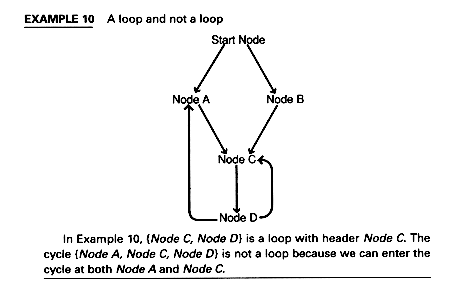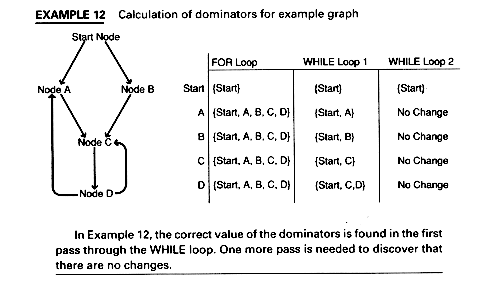8.6.3 Dominators

-
Here, the start node dominates all nodes; Node A and Node B do not dominate anything except themselves, Node C dominates Node D and itself, and Node D does not dominate anything except itself.
-
Algorithm
Finding Dominators
DOM (Start) := {Start}
FOR node < > Start DO
DOM (node) = {All nodes}
ENDFOR
WHILE changes to any DOM(node) occur DO
FOR each node < > start DO
DOM(node) = {node}  (
(  Dom(p) )
p
Dom(p) )
p  Pred(node)
ENDFOR
ENDWHILE
Pred(node)
ENDFOR
ENDWHILE
This algorithm for computing dominators does not indicate in what order to visit the node, just that all nodes are visited. In a later section, we will discuss an order for which this algorithm converges rapidly. Example 12 shows dominators being calculated for the graph of Example 11.

